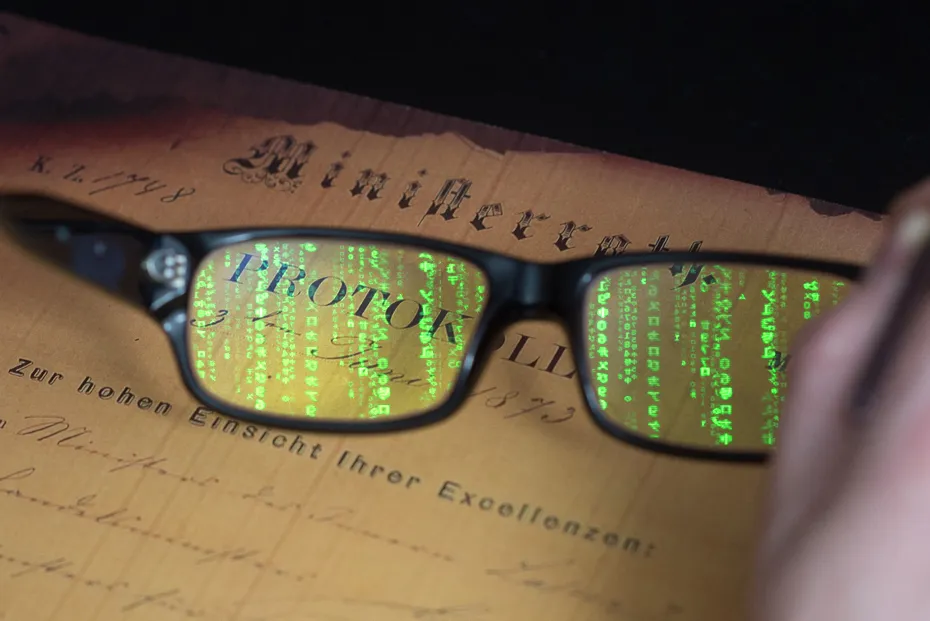
Die Ministerratsprotokolle Österreichs und der österreichisch-ungarischen Monarchie 1848–1918
- Hosting organisations
- IHB - Institut für die Erforschung der Habsburgermonarchie und des Balkanraumes
- Responsible persons
- Stephan Kurz, Arno Strohmeyer, Anatol Schmied-Kowarzik, and Wladimir Fischer-Nebmaier
- Start
- End
The Council of Ministers was the central body of government. Its minutes are spanning almost sixty years of administration. They are one of the few resources available in edited form, and they reveal the inner workings of the governments of the monarchy - they are containing vast amounts of prosopographical, political, administrative, economic, cultural and social information. They are an excellent historical source.
The Justice Palace fire of 1927 decimated the protocols that were written between 1867 and 1918. Nevertheless, they were used by individual historians for research. Fortunately, before the fire, copies of some of the minutes had been made for interested parties in Vienna and Prague. The damaged inventory has been available in the archives, but it was difficult to access to the public.
In 1967 Friedrich Engel-Janosi founded the edition of the Austrian Ministerial Council Protocols in close cooperation with Hungarian historians. It is a text-critical and commented full-text edition of the original sources in the Austrian State Archives. The first subject is the minutes of the meeting of the Council of Ministers, which has existed since 1848 (1852–1861 Ministerial Conference) of the Austrian Empire up to the Austro-Hungarian Compromise in 1867. These form the first series of the edition. The Austro-Hungarian Compromise of 1867 transformed the Austrian Empire into the Austro-Hungarian Monarchy. These protocols of the joint Council of Ministers of the Austro-Hungarian Monarchy 1867-1918 form the 2nd series. In the third series, the Cisleithanian (Austrian) ministerial minutes 1867-1918 are edited.
The first series was started in 1967 by an editorial committee, continued by the Austrian Institute for East and Southeast Europe in 1993 and moved to the Austrian Academy of Sciences’ Commission for the History of the Habsburg Monarchy in 2008, from where it was transferred to the Institute for Research on Modern and Contemporary History, now Institute for Habsburg and Balkan Studies in 2013, where it was completed in 2018. It comprises an introductory volume and 27 text volumes in six sections.
The retro-digitization of these volumes has been completed. For this digital edition, this data has been completely reworked, upgraded, provided with metadata on protocol level as well as with information on the participating persons, the data and, if available, links to online resources from ANNO (AustriaN Newspapers Online) and ALEX (Historical legal and legal texts online). Internal links between protocols have also been added.
The 2nd series has been published by the History Institute of the Hungarian Academy of Sciences since 1966. This series contains five published volumes, of which the Austrian Academy of Sciences Press has made digital copies in PDF format. The digital edition currently includes agenda lists from the tables of contents of these volumes (work in progress, expected completion: summer 2020).
The third series refers to the Cisleithanian (Austrian) ministerial protocols 1867-1918. They have been published at the the Institute for Habsburg and Balkan Studies of the Austrian Academy of Sciences, and are edited both in book form and as a digital edition. For this purpose, TEI-flavoured XML is created directly from Word documents. In this series, the depth of tagging is the highest because the documents are ‘born digital’ material; all mentioned entities (persons, institutions) as well as scientific references are recorded using our own systems and linked to in the TEI documents.
Details on the history of the edition can be found in the introductory volume of the first series and in the forewords to the individual volumes. Details on the digitization methods and workflows can be found here.